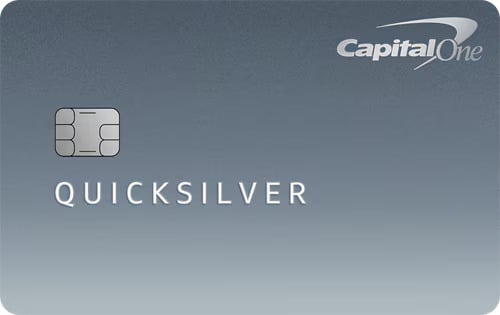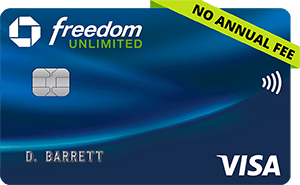Which 1.5% Cash-Back Credit Card Should You Choose?
It can be hard to notice differences between contenders. Here's how to find the one that fits you.

Many or all of the products on this page are from partners who compensate us when you click to or take an action on their website, but this does not influence our evaluations or ratings. Our opinions are our own.
Some people just want a simple cash-back credit card that offers a decent flat rewards rate on all their spending. No tracking bonus categories or worrying about which card to use at which merchant.
The problem is, a number of cards offer a respectable 1.5% cash back on all purchases, including among major credit unions. How do you choose?
We’ll show some contenders and then explain factors to help you pick one for yourself. But the short answer is that most 1.5% cash-back cards are similar. So if you’re not fussy, just pick one you like — maybe from the chart below.
You can find cash-back cards that earn 2% back or more on purchases, but they might have other shortcomings, such as an annual fee, a requirement to join a credit union or no sign-up bonus.
Good 1.5% cash back credit cards
Here are no-annual-fee 1.5% cash-back cards we like:
Earn a one-time $200 cash bonus after you spend $500 on purchases within 3 months from account opening.
$200 online cash rewards bonus after making at least $1,000 in purchases in the first 90 days of your account opening.
Limited Time Intro Offer: Earn a $250 Bonus after you spend $500 on purchases in your first 3 months from account opening.
0% intro APR for 15 months on purchases and balance transfers, and then the ongoing APR of 19.24%-29.24% Variable APR.
0% Intro APR for 15 billing cycles for purchases, and for any balance transfers made in the first 60 days. After the Intro APR offer ends, a Variable APR that’s currently 18.24%-28.24% will apply.
0% intro APR on purchases and Balance Transfers for 15 months, and then the ongoing APR of 18.99%-28.49% Variable APR.
We included the Chase Freedom Unlimited® because it earns at least 1.5% cash back on purchases. But it also gives you bonus-category rewards:
5% on travel purchased through Chase.
3% on dining at restaurants.
3% at drugstores.
So, the downside is that it’s not as simple as other flat-rate 1.5% cards because it has bonus categories. But if you make it your main card, you don't have to think about it, and the card can provide more value than 1.5% back on everything.
Terms and conditions apply. Credit products subject to lender approval.

How to choose
The 1.5% cash-back rate is the most important factor, but they all have that. So, that doesn’t help you choose. Instead, consider these factors as tiebreakers.
Welcome offer
If you’re hunting for a cash-back card, the dollars are important. You can boost those dollars by earning a sign-up bonus — sometimes called a new cardholder offer or welcome offer. The catch? You must charge a certain dollar amount on the card to earn the bonus, and you have to do it relatively soon after you get the card, typically within three months.
Heavy spenders will be able to earn the bonus on cash-back cards without a problem. Compared with travel cards, for example, the spending requirement is typically modest — maybe $1,000 in three months. But if you’re a light spender, consider choosing a card whose bonus has a lower spending requirement.
0% intro APR period
An introductory 0% annual percentage rate can be valuable. Unlike a bonus, it doesn’t give you free money. Instead, it saves you money for free — by allowing you to carry debt, typically for a year or more, without paying interest.
What to look for:
How many months does the promotional offer last? A year or more is good.
Does the 0% APR apply to purchases, balance transfers or both?
If you’re interested in a balance transfer, look up the balance transfer fee. A 3% fee is typical; 5% is high. (It's difficult, but not impossible, to find cards that don't charge balance transfer fees at all.)
Ongoing APR
In the chart above, you have a sampling of the APRs that top cards are charging for carrying a monthly balance. If you won’t pay your balance in full, rethink whether a rewards card is best for you. You might focus on other cards that specialize in low ongoing APRs.
Annual fee
It’s typical for 1.5% cash-back cards to have no annual fee. If you have to pay an annual fee, make sure there’s a good reason.
Perks
Dive deeper into each card’s features and you might find they make one choice more appealing. For example, you might have a chance at higher rewards, like with the Bank of America® Unlimited Cash Rewards credit card. It offers Preferred Rewards members 25% to 75% more cash back on every purchase, which means you could earn up to 2.62% cash back on every purchase if you qualify.
Or, you might find it appealing that purchases with the Ducks Unlimited Rewards Visa® Card support Ducks Unlimited’s efforts to preserve and maintain wetlands and other native habitats for ducks, geese and other wildlife.
Credit required
One good reason to pay an annual fee is if you don’t have top-notch credit. That’s why Capital One, for example, offers two different 1.5% cash-back cards. They might seem the same, but there's a key difference between the two: your credit.
The Capital One Quicksilver Cash Rewards Credit Card requires good credit or better (typically FICO scores of at least 690). It has an annual fee of $0 and a sign-up bonus: Earn a one-time $200 cash bonus after you spend $500 on purchases within 3 months from account opening.
The Capital One QuicksilverOne Cash Rewards Credit Card is designed for someone with fair credit (FICO scores of at least 630) . There's an annual fee of $39, and it doesn't come with a sign-up bonus.
If you're working to build or repair your credit, you've got a better shot at getting approved for the Capital One QuicksilverOne Cash Rewards Credit Card. It could be worth paying the annual fee.
Foreign transaction fees
Many cash-back credit cards have foreign transaction fees; 3% on each purchase abroad is common. But some don’t. If you’ll often be traveling out of the country with this cash-back card, make sure it doesn’t charge these fees on foreign transactions.
Example: The Capital One Quicksilver Cash Rewards Credit Card has no foreign transaction fees.
Hassle
People who want a simple, flat-rate cash-back card probably want to avoid complexities. If that’s you, make that part of your decision. For example, while credit unions can be very consumer-friendly financial institutions, getting one of their credit cards means joining the credit union, which involves at least a little hassle compared with general market cards.
Rewards cap
Typically, the 1.5% cash back is unlimited, meaning you continue earning 1.5% back whether your annual spending on the card is $5,000 or $50,000. If a card you're considering caps its 1.5% earnings at a certain dollar amount that you’re likely to hit, consider a different card.
Redemption options
Most cards have similar redemption options. You might be able to get your cash back as a statement credit, direct bank deposit or paper check, among other choices. As long as you’re getting full value for your rewards, it doesn’t matter much. But choose a card that has a payout method you prefer.
Related to this point is a redemption requirement: the minimum rewards you’re allowed to redeem. Many cards let you redeem for any amount, but some require you to accumulate $25 first before you can cash out rewards, for example. It’s a minor factor unless it’s important for you to cash out, say, $12 in rewards, instead of waiting until you accumulate $25.
Desirability of issuer
If you already have a Chase credit card, for example, and you’re happy or disgruntled with your experience, that might affect whether you want another card by the same issuer.
Many people like to use two cards in tandem: one for higher rewards on certain spending categories and a 1.5% cash-back card for all other spending. You might want to use two cards by the same issuer to keep things simpler. Then, you can access your accounts with a single app or website login.
Acceptance of card network
American Express and Discover credit cards typically rank high in customer satisfaction, as measured by J.D. Power, and are accepted at many merchants in the United States.
However, you might want to avoid cards from those issuers if you often travel abroad. Their card networks are not as widely accepted in other countries as Visa and Mastercard.
Find the right credit card for you.
Whether you want to pay less interest or earn more rewards, the right card's out there. Just answer a few questions and we'll narrow the search for you.





